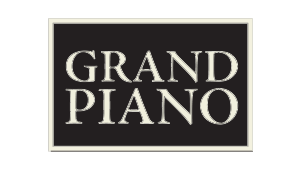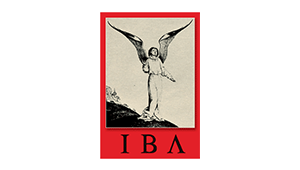Da capo
Dal segno
Decrescendo
Diminuendo
Divertimento
Divertissement
Double bass
Double bassoon
Dramatic soprano
Drame lyrique
Dramma giocoso
Dramma per musica
Drum
Duet
Duo
Dynamics
Fagott
Fairy-tale opera
Falsetto
Fanfare
Fantasy
Farsa
Favola in musica
Festa teatrale
Fiddle
Finale
Flat
Flautist
Flute
Folia (follia), La
Forte
Fortepiano
Fugue
D is a note in the scale (= Italian, French: re).
Da capo (Italian: from the beginning), abbreviated to the letters D.C. at the end of a piece of music or a section of it, means that it should be played or sung again from the beginning (Da capo al fine) or from the beginning up to the sign (Da capo al segno). A da capo aria, often found in the later Baroque period, is an aria in three sections, the third an ornamented repetition of the first.
Dal segno (from the sign) is used as a direction to performers to repeat a piece from a sign written above the music at some point after the beginning. A dal segno aria is an aria with a repeated element of this kind.
Decrescendo (Italian: growing less) is used as a direction to performers, meaning becoming softer.
Diminuendo (Italian: becoming less) is used as a direction to performers to play more softly.
A divertimento is an instrumental composition intended for entertainment, usually in a number of movements. The term is used particularly in the second half of the 18th century. Haydn described his first string quartets as divertimenti and the title is also used by Mozart and other composers of the period.
The French word divertissement is used in English principally to indicate the additional dance entertainment that is often a part of classical ballet. A well-known example would be the series of characteristic dances that entertain the heroine towards the end of Tchaikovsky’s Nutcracker.
The double bass is the largest and lowest of the orchestra’s string instruments. It has generally four or five strings and its music sounds an octave (eight notes) lower than it is written. If, as often in music before 1800, the double bass plays the same music as the cello, the sound will be an octave lower.
A double bassoon plays an octave lower than the bassoon.
The dramatic soprano voice is needed for roles that make demands on the power and intensity of the soprano. Examples would include the role of Isolde in Wagner’s Tristan und Isolde (‘Tristan and Isolde’) and a number of other Wagnerian heroines. Sometimes lyrical elements may predominate over the heroic, as in Tosca or in Cio-Cio-San (Madama Butterfly), calling for a combination of the dramatic and the lyrical.
The French drame lyrique (lyric drama) was, from the 1750s until the early 19th century, a form of opera that dealt seriously enough with characters of lower degree than the kings and demi-gods of French tragédie lyrique. The term later came into very general use, as, in the later 19th century, in Massenet’s Werther, with its middle-class setting.
The dramma giocoso (cheerful drama) is found principally in Italian opera of the 18th century and notably in libretti by Carlo Goldoni. It indicates an opera that is, in general, comic, but includes more serious roles. The librettist Lorenzo Da Ponte used the term for his libretto for Mozart’s Don Giovanni.
Dramma per musica (drama for music) would appear to have been largely a term used by librettists for their work, particularly in contributions to what became known as opera seria, in the first part of the 18th century.
The form of drum generally found in the orchestra is the kettledrum or, in incorrect Italian, timpani (incorrect in that the Italian singular timpano seldom appears in English usage). Other smaller and larger drums may also be used, including the snare drum, a smaller instrument with a vibrating strip that can be switched on or off, and the bass drum. Timpani are tunable, nowadays usually by means of pedals that loosen or tighten the drum-skin.
A duet is part of an opera intended for two voices. It has always been of importance in opera, from Cavalieri’s duet for Body and Soul in his Rappresentatione di anima e di corpo (‘Representation of Soul and Body’) in 1600 and Monteverdi’s famous closing duet for Nero and Poppaea in L’incoronazione di Poppea (‘The Coronation of Poppaea’) to Sous le dôme épais (‘Under the thick canopy of jasmine’) in Lakmé by Delibes, with voices joined in mellifluous parallel. Examples of duets continue in modern repertoire, often as expressions of love between the two singers.
A duo is a piece of music for two performers. Written for the piano such a piece would need two performers and two pianos. It is also the name for a group of two players.
Dynamics are the levels of sound, loud or soft, in a piece of music.
E is a note in the scale (= Italian, French: mi).
The practical use of an echo effect, sometimes by the sound of the goddess Echo herself, provided additional interest in early Baroque opera. Well-known examples occur in Cavalieri’s Rappresentatione di anima e di corpo (‘Representation of Soul and Body’), where Soul calls on Heaven for an answer to her questions, which comes in syllables derived from the last words of each question. There is a similar use of the device in the fifth act of Monteverdi’s Orfeo, where Echo herself answers the distraught Orpheus, his Eurydice now lost to him.
An elegy (= French: élégie) is a lament, either vocal or instrumental.
(see ‘Cor anglais’)
The word ensemble is used in three senses: it may indicate the togetherness of a group of performers (if ensemble is poor, the players are not together); it may indicate part of an opera that involves a group of singers; or it may mean a group of performers.
An entr’acte (= German: Zwischenspiel) is an interlude between the acts or scenes of an opera or other such dramatic and musical work. While the function of the entr’acte may be dramatic, it may also be practical, allowing the necessary time for changes of scene, if some element of overall continuity is needed.
The French word entrée has two possible meanings in opera. It may refer to the entrance, or first appearance, of a character (= German: Eintritt), or, more particularly, in the French ballet de cour (court ballet), to one unified scene.
An étude is a study, intended originally for the technical practice of the player. Chopin, Liszt and later composers elevated the étude into a significant piece of music, as opposed to a mere vehicle for exercise.
The exposition in sonata form is the first section of the movement, in which the principal thematic material is announced. In the exposition of a fugue (a fugal exposition) the voices (= parts) enter one by one with the same subject; the exposition ends when all the voices have entered.
F is a note in the scale (= Italian, French: fa).
Fagott (German) or fagotto (Italian) is the bassoon, the bass of the woodwind section in the orchestra (see ‘Bassoon’).
(see ‘Märchenoper’)
The falsetto voice is the treble register, used for special effect by a male adult singer. Falsettists, singers who normally use this register, if not elevated to the rank of countertenors, may be found singing the alto line in English cathedral choirs. In opera the register is generally used for comic effect, as of a man imitating a woman, for example in Verdi’s Falstaff, where Falstaff imitates the words of Mistress Ford, or to marked dramatic effect in innovative works of the later 20th century. There is a general view that a tenor who uses falsetto to reach his top notes is cheating.
A fanfare is a flourish of trumpets or other similar instruments, used for military or ceremonial purposes, or music that conveys this impression.
Fantasy (= French: fantaisie; Italian: fantasia; German: Fantasie) is a relatively free form from the 16th and 17th centuries, in which a composer may exercise his musical fancy (usually in contrapuntal form). In later periods the word was used to describe a much freer form, as in the written improvisations for piano of this title by Mozart, or Beethoven’s so-called ‘Moonlight’ Sonata, described by the composer as Sonata quasi una fantasia (‘Sonata like a fantasia’).
The Italian farsa (farce) was a shorter form of comic opera, popular in Venice in Rossini’s heyday. He himself used the descriptive title for La cambiale di matrimonio (‘The Bill of Marriage’), La scala di seta (‘The Silken Ladder’) and Il Signor Bruschino.
The Italian favola in musica (story in music) is descriptive of early Baroque opera at the beginning of the 17th century. The term, borrowed from earlier literary examples, where the word favola was in common use in narrative titles for works of a mythological or pastoral content, is used by Monteverdi on the title-page of his opera Orfeo, where the dramatic content is of a similar kind.
The descriptive title festa teatrale (theatrical festivity) was applied, from about 1650 to 1750, to dramatic and musical works, including, on occasions, operas and serenatas. They are often celebratory in content.
A fiddle is a violin, but the word is used either colloquially or to indicate a folk instrument. The Australian composer Percy Grainger, who objected to the use of words of Latin origin, used the word fiddle for violin, middle fiddle for viola and bass fiddle for cello, as part of his eccentric vocabulary of ‘blue-eyed English’.
The finale is the last part of an act or scene in opera, and is often extensive in length, combining a number of distinct sections or movements, usually with an ensemble before the end. This type of finale is exemplified in the operas Mozart wrote with the librettist Lorenzo Da Ponte. There clearly continued a need for a general conclusion in which the confusions and conflicts of all characters might in the end be resolved. The ending itself, the ultimo finale, however, might be relatively perfunctory, with a concluding chorus expressing happiness or sorrow, or drawing a moral from what has passed.
A flat is indicated by a sign derived from the letter b, showing that a note should be lowered by a semitone. In a more general sense music that is flat may simply be out of tune, its pitch below the accepted pitch.
A flautist is a player of the flute.
The word flute may indicate a variety of wind instruments without reeds. The modern orchestra makes use of transverse flutes, augmented as necessary by a smaller transverse flute known as a piccolo and very occasionally by a larger instrument, the alto or bass flute, pitched a fourth lower. The straight flute is known in English as a recorder (= French: flûte à bec; German: Blockflöte; Italian: flauto dolce) but was not used in the orchestra after the later Baroque period.
La Folia (= Spanish: Folía; French: Folie d’Espagne) is a well-known dance tune popular from the 16th century or earlier and found in the work of composers such as Corelli (1653–1713), who used the theme for a set of variations forming a violin sonata, or later by Rachmaninov (1873–1943) in his incorrectly named Variations on a Theme of Corelli.
Forte (Italian: loud) is used in directions to performers. It appears in the superlative form fortissimo (very loud). The letter f is an abbreviation of forte, ff an abbreviation of fortissimo, with fff or more rarely ffff even louder.
The word fortepiano (loud-soft) has effectively the same meaning as pianoforte (soft-loud), the full name of the piano, so called because of its hammer action and consequent ability to produce sounds both loud and soft, corresponding to the force applied to the keys. Fortepiano is generally used to indicate the earlier form of the piano, as it developed in the 18th century. A Mozart piano, for example, might be called a fortepiano. The instrument is smaller, more delicately incisive in tone than the modern instrument, and is in some respects more versatile.
Fugue has been described as a texture rather than a form. It is, in essence, a contrapuntal composition. The normal fugue opens with a subject or theme in one voice or part. A second voice answers, with the same subject transposed and sometimes slightly altered, usually at the interval of a fifth; the first voice continues at the same time, with an accompaniment that may have the character of a countersubject that will be used again as the piece progresses. Other voices enter one by one, each of them with the subject, the third in the form of the first entry, the fourth in the form of the answer in the second voice. A fugue may have as few as two voices (the word voice does not necessarily imply singing in this context) and seldom more than four. The subject announced at the beginning provides the chief melodic element in a fugue. When all the voices have entered, completing the so-called fugal exposition, there will be an ‘episode’: a bridge that leads to a further entry or series of entries answering each other, now in different keys. The fugue, as it had developed by the time of Johann Sebastian Bach, continues in this way, often making use of stretto (overlapping entries of the subject) and a pedal-point (a sustained note, usually below the other parts) as it nears the end. The fugue became an important form or texture in the Baroque period, reaching its height in the work of J.S. Bach in the first half of the 18th century. Later composers continued to write fugues (it was a form favoured by Mozart’s wife Constanze), Beethoven including elaborate fugues in some of his later piano sonatas and a remarkable and challenging Grosse Fuge (‘Great Fugue’) as part of one of his later string quartets. The writing of fugue remains an important element in the technical training of composers.






























